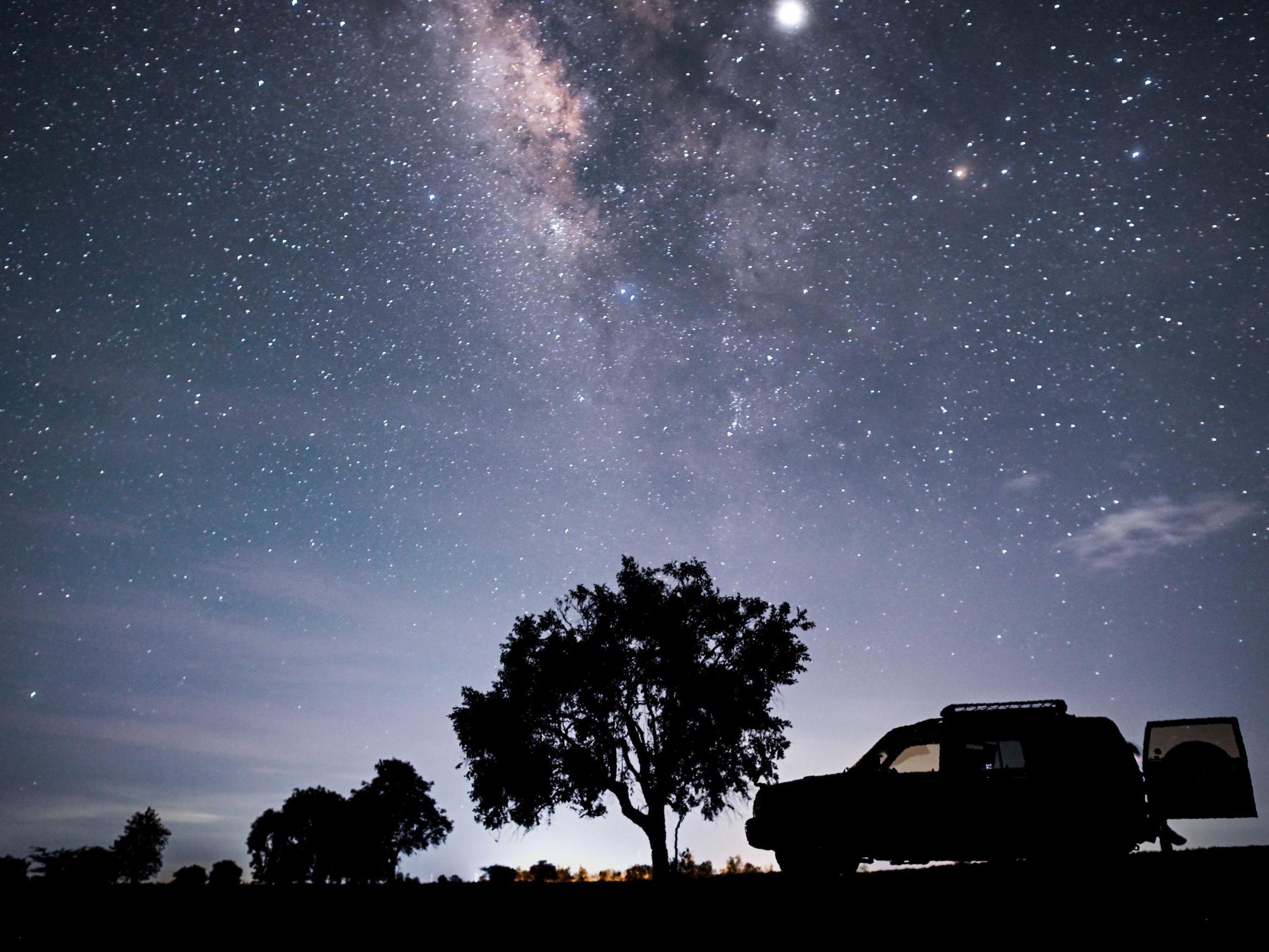This website uses cookies so that we can provide you with the best user experience possible. Cookie information is stored in your browser and performs functions such as recognising you when you return to our website and helping our team to understand which sections of the website you find most interesting and useful.

A star is set to explode into a "nova" that will be the brightest in the sky by the end of this century, scientists say.
For now, the star known as V Sagittae is very dim. It is so faint that it is hard to find even with a telescope.
But some time around 2083, it will explode and shine with the intensity of Sirius, the brightest star we can see in the night sky. At that point, it will become the most luminous star in our Milky Way galaxy.
When that happens, the star will become involved in a dramatic, violent "death-spiral" that will send out light that will be bright and visible from Earth, astronomers have said.
“We now have a strong prediction for the future of V Sge,” said Bradley E. Schaefer from Louisiana State University, one of the authors of the new study. “Over the next few decades, the star will brighten rapidly.
Created with Sketch.
Created with Sketch.
1/10
Mystic Mountain, a pillar of gas and dust standing at three-light-years tall, bursting with jets of gas flom fledgling stars buried within, was captured by Nasa's Hubble Space Telelscope in February 2010
Nasa/ESA/STScI
2/10
The first ever selfie taken on an alien planet, captured by Nasa's Curiosity Rover in the early days of its mission to explore Mars in 2012
Nasa/JPL-Caltech/MSSS
3/10
Death of a star: This image from Nasa's Chandra X-ray telescope shows the supernova of Tycho, a star in our Milky Way galaxy
Nasa
4/10
Arrokoth, the most distant object ever explored, pictured here on 1 January 2019 by a camera on Nasa's New Horizons spaceraft at a distance of 4.1 billion miles from Earth
Getty
5/10
An image of the Large Magellanic Cloud galaxy seen in infrared light by the Herschel Space Observatory in January 2012. Regions of space such as this are where new stars are born from a mixture of elements and cosmic dust
Nasa
6/10
The first ever image of a black hole, captured by the Event Horizon telescope, as part of a global collaboration involving Nasa, and released on 10 April 2019. The image reveals the black hole at the centre of Messier 87, a massive galaxy in the nearby Virgo galaxy cluster. This black hole resides about 54 million light-years from Earth
Getty
7/10
Pluto, as pictured by Nasa's New Horizons spacecraft as it flew over the dwarf planet for the first time ever in July 2015
Nasa/APL/SwRI
8/10
A coronal mass ejection as seen by the Chandra Observatory in 2019. This is the first time that Chandra has detected this phenomenon from a star other than the Sun
Nasa
9/10
Dark, narrow, 100 meter-long streaks running downhill on the surface Mars were believed to be evidence of contemporary flowing water. It has since been suggested that they may instead be formed by flowing sand
Nasa/JPL/University of Arizona
10/10
Morning Aurora: Nasa astronaut Scott Kelly captured this photograph of the green lights of the aurora from the International Space Station in October 2015
Nasa/Scott Kelly
1/10
Mystic Mountain, a pillar of gas and dust standing at three-light-years tall, bursting with jets of gas flom fledgling stars buried within, was captured by Nasa's Hubble Space Telelscope in February 2010
Nasa/ESA/STScI
2/10
The first ever selfie taken on an alien planet, captured by Nasa's Curiosity Rover in the early days of its mission to explore Mars in 2012
Nasa/JPL-Caltech/MSSS
3/10
Death of a star: This image from Nasa's Chandra X-ray telescope shows the supernova of Tycho, a star in our Milky Way galaxy
Nasa
4/10
Arrokoth, the most distant object ever explored, pictured here on 1 January 2019 by a camera on Nasa's New Horizons spaceraft at a distance of 4.1 billion miles from Earth
Getty
5/10
An image of the Large Magellanic Cloud galaxy seen in infrared light by the Herschel Space Observatory in January 2012. Regions of space such as this are where new stars are born from a mixture of elements and cosmic dust
Nasa
6/10
The first ever image of a black hole, captured by the Event Horizon telescope, as part of a global collaboration involving Nasa, and released on 10 April 2019. The image reveals the black hole at the centre of Messier 87, a massive galaxy in the nearby Virgo galaxy cluster. This black hole resides about 54 million light-years from Earth
Getty
7/10
Pluto, as pictured by Nasa's New Horizons spacecraft as it flew over the dwarf planet for the first time ever in July 2015
Nasa/APL/SwRI
8/10
A coronal mass ejection as seen by the Chandra Observatory in 2019. This is the first time that Chandra has detected this phenomenon from a star other than the Sun
Nasa
9/10
Dark, narrow, 100 meter-long streaks running downhill on the surface Mars were believed to be evidence of contemporary flowing water. It has since been suggested that they may instead be formed by flowing sand
Nasa/JPL/University of Arizona
10/10
Morning Aurora: Nasa astronaut Scott Kelly captured this photograph of the green lights of the aurora from the International Space Station in October 2015
Nasa/Scott Kelly
"Around the year 2083, its accretion rate will rise catastrophically, spilling mass at incredibly high rates onto the white dwarf, with this material blazing away.
"In the final days of this death-spiral, all of the mass from the companion star will fall onto the white dwarf, creating a super-massive wind from the merging star, appearing as bright as Sirius, possibly even as bright as Venus.”
V Sge, as it is known for short, is part of a "Cataclysmic Variable". Those CVs consist of normal star that it is in orbit around a white dwarf, and sees the ordinary star's mass gradually dropping onto the white dwarf, and they can often exhibit dramatic, spectacular behaviour as they do.
Even among CVs, V Sge is intense: it is the most extreme of any known, and is 100 times more luminous than all other known examples. It is churning a huge stellar wind that is similar to the one thrown out by the most massive stars as they die.
It has already been getting brighter, and until the last decade it had been getting 10 times as luminous. Scientists were able to confirm that using historical data that showed it had got much more luminous between 1907 and recent years.
That will continue as more of the mass falls away, resulting in a dramatic climax that will see most of the gas fall from the big star into the white dwarf in its last weeks and days.
"This falling mass will release a tremendous amount of gravitational potential energy, driving a stellar wind as never before seen, and raise the system luminosity to just short of that of supernovae at peak," said Professor Schaefer in a statement.
Eventually they will merge into one star, hitting their peak brightness. It will leave behind one single star that has a white dwarf core.
Astronomers were able to use their historical understanding of the strange behaviour of V Sge to predict its future. They say the final merging will happen around 2083, though it could be around 16 years either way.
“Thus, V Sge will appear startlingly bright in the night sky, said Schaefer. “This is substantially brighter than the all-time brightest known nova (at -0.5) just over a century ago, and the last time any 'guest star' appeared brighter was Kepler's Supernova in the year 1604.
“Now people the world over can know that they will see a wondrous guest star shining as the brightest in the sky for a month or so, being pointed at by the Arrow just below Cygnus, the Swan,” said Schaefer.



 Africana55 Radio
Africana55 Radio 

